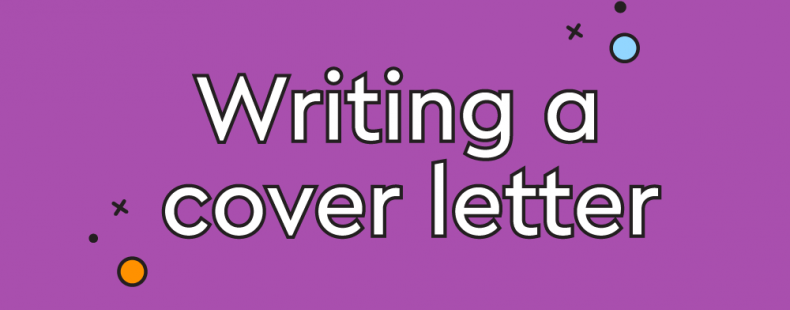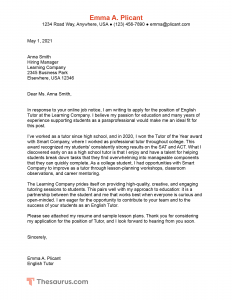Not every job application requires a cover letter, but when one is requested, you want to be able to knock it out of the park. Although a cover letter is a short document, it is how employers will get to know who you are as a person, beyond just the bullet points on your resume.
To help you, we’ve created the ultimate 9-step guide to writing a strong cover letter, from formatting the header and greeting, to signing off and preparing to share the letter with a future employer. Every cover letter is slightly different depending on the field and applicant’s personal experience, but there are some general guidelines that everyone should keep in mind when writing one.
You’ll start here with an overview of the function and format of a cover letter and then follow steps 1 through 9 that will address many of the specific questions you probably have related to writing this type of letter. Feel free to skip down to the list of steps below and click on the parts of the process that feel most applicable to you. We’ll also share a sample cover letter that you can use as a model for your own.
We are going to review every single detail of writing a cover letter so that a potential employer won’t overlook all you have to offer. When it comes to writing a good cover letter, attention to detail is important because the smallest typo can cause your whole application to be rejected.
What is a cover letter?
First, though, the basics. A cover letter is a letter that accompanies your job application. Although a short document, a cover letter has to accomplish a few different goals. A good cover letter should:
- Describe relevant experience and accomplishments in greater detail than is possible on the resume
- Show your knowledge of the position or company
- Give the potential employer a sense of who you are as a person
- Demonstrate your interest in the position by personalizing the letter
- Briefly explain a long gap in your work history (if necessary)
Essentially, a cover letter is a chance for you to make the best possible argument for why you are a good fit for the job.
Are cover letters necessary?
Not every employer wants a cover letter
Not every employer wants a cover letter. If it explicitly states on the job posting that they do not want a cover letter, or if there is no way to upload one along with the rest of the application, take the hint and skip it. Additionally, if you simply do not have the time to write or tailor a cover letter to a job posting and it is optional, you may choose to submit without it.
It’s a good idea to include cover letters
With the exception of these few cases, it is generally a good idea to include a cover letter with your job application. Some employers expect or require a cover letter with an application, even if they do not state it explicitly. If a cover letter is optional, providing one shows that you are willing to make the extra effort for a position.
A cover letter is a good way for the employer to learn more about you and for you to make a strong case for why the employer should hire you. With this in mind, include a cover letter whenever possible.
What to include in a cover letter
Every cover letter should be tailored to the position you’re applying for. That said, there are some standard building blocks you should include in every cover letter you write. A standard cover letter includes:
- A header with your name and contact information
- A greeting with the name of the hiring manager
- An introduction that states the name of the position you’re applying to
- Body paragraphs that state why you are a good fit for the position
- A conclusion that includes a “call to action”
- A polite sign-off
We are going to walk you through each of these components step-by-step (see below). Every element of your cover letter should be polished and easy-to-read. Try to keep these two qualities in mind for each and every part of your letter. From your email address to the language you use to describe your accomplishments, your cover letter should be a testament to your professionalism.
Learn more about how to discuss why you are a good fit and ideal candidate here.
How long should your cover letter be?
Your cover letter should never be longer than a single page, including the header and signature. If you are having trouble fitting everything onto one page, re-read your draft and try to cut any unnecessary language. Making the font or margins smaller can also help you fit it all onto one page.
In terms of word count, your cover letter will be around 200-350 words, including the header.
What not to do in a cover letter
We’ve discussed what to include in a cover letter, but what should you leave out? We’ll call these the big “don’ts.” The biggest don’t is “Don’t use informal language,” including profanities, informal acronyms like “thx,” or casual expressions like “super excited.”
In addition to this guiding light, there are a few more don’ts of cover-letter writing you should be aware of.
Discussing salary requirements
You should know how much your work is worth. Websites like Glassdoor can help you get a sense of what a competitive salary or wage would be for the field and your level of experience. That said, the cover letter is not the place to talk about salary requirements. Those kinds of conversations are best saved for the interview process.
Forgetting to include relevant experience and skills
Your cover letter should address as much of your relevant experience as possible, without restating what is on your resume. You can do this by describing in detail how you did your work, rather than describing what you did. In other words, you want to highlight your personal accomplishments and abilities in the position.
Including irrelevant experience and skills
Your cover letter, like your resume, should only include experience that is relevant to the position. If you are applying for a job in education, you would likely not mention your experience in retail (and vice-versa). You want to focus on giving context to your abilities as they relate to the job.
Reusing the same cover letter
You should personalize your cover letter for every position you apply for. That doesn’t mean that you have to start entirely from scratch every time. You might choose to reuse some of the same formatting or language from letter to letter, especially if it is for the same kind of position. However, you want to take the time to tweak your boilerplate language for each position by incorporating specific details from the job posting or company website.
9 steps to writing a great cover letter
Writing a cover letter is a complex process, and we’re going to devote a series of articles to making sure we cover the ins and outs of each step along the way. While several of the steps are grouped in one article, you can use the list below to choose the articles most relevant to your job application.
Get inspired with this cover letter example
We’ve provided a sample cover letter you can use to follow along in this series and create your own. Click on the image below to expand it. You’ll learn more about the format of this cover letter in our first article in the series.













